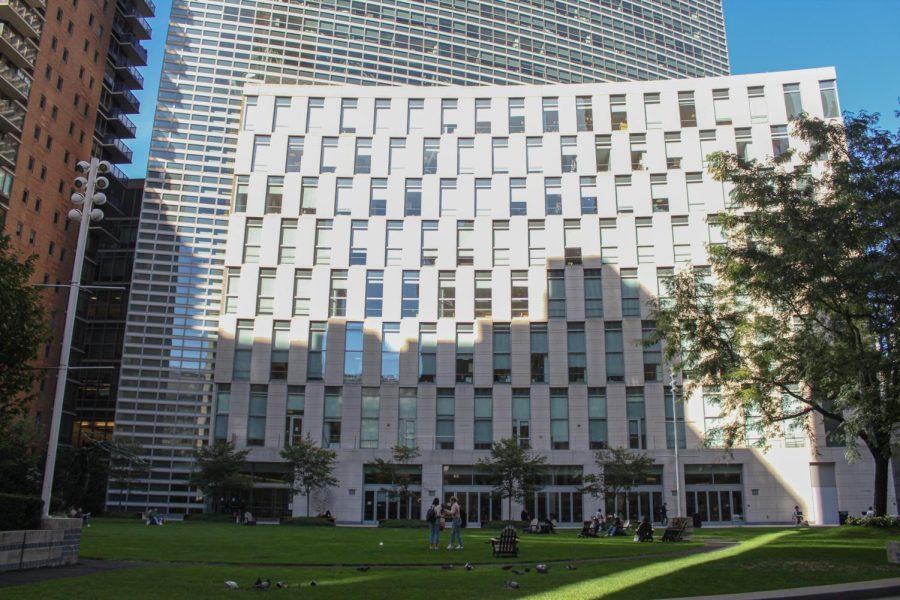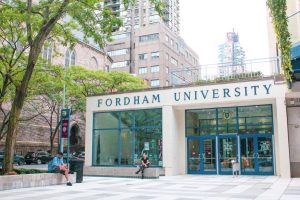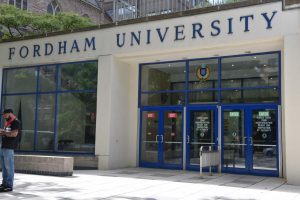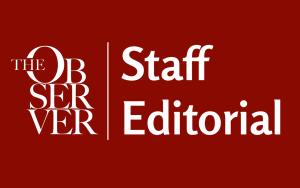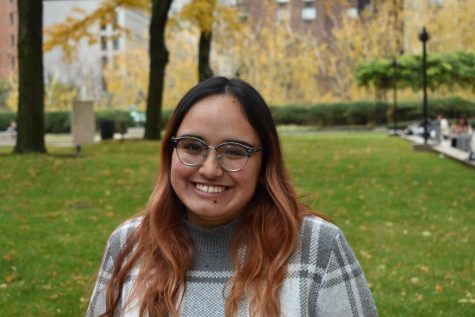Fordham’s Free Speech Ranking Remains Low
The past lawsuit with Austin Tong and the ongoing court battle with SJP are reasons for the university’s standing
This academic year, Fordham ranked 165th in the College Free Speech Rankings Survey.
October 13, 2022
Fordham was ranked 165 out of 203 in the College Free Speech Rankings survey by the Foundation for Individual Rights and Expression (FIRE) for the 2022-23 school year. The previous year, the university ranked among the 10 worst colleges for free speech, at 145 out 154.
FIRE is a nonpartisan organization whose mission is to “to defend and sustain the individual rights of all Americans to free speech and free thought” and emphasizes the defense of individual rights of students and faculty members across the nation’s campuses. Fordham’s 2022 ranking, similar to that of previous years, is largely based on the opinions from 250 of its students that took the FIRE survey through a college poll program that offered a gift card incentive.
The college poll includes questions concerning students’ comfort expressing ideas, their understanding of administrative support regarding free speech, their individual tolerance of other speakers and comfort when discussing controversial topics. Also considered within the survey were questions aimed at gathering data regarding students’ tolerance for conservative or liberal speakers as well as disruptive conduct against a campus speaker.
Poll questions assessing administrative behavior include the number of scholars whose speech rights were supported by the administration during speech related controversies from 2019-22, the number of scholars sanctioned from 2019-22, the number of successful disinivitations from 2019-22 and the written policies governing student speech at more than 475 institutions of higher education in the United States, of which there are three possibilities: red, yellow, or green. A red rating implies that the institution has at least one policy that “both clearly and substantially restricts freedom of speech.”
In Fordham’s case, FIRE highlighted the previous lawsuit with Austin Tong and the ongoing court battle against Students for Justice in Palestine (SJP) as factors contributing to its red speech code rating. According to FIRE, the Tong case included the administration placing a student on probation and banning him from campus after he posted an Instagram photo commemorating the Tiananmen Square Massacre holding a gun in his backyard, and the ongoing SJP case involves the university rejecting the chapter’s political beliefs.
Fordham was also flagged as a red light institution due to its IT policy. FIRE cited the prohibition of using IT resources and communication services to intimidate, insult or harass others or to create a hostile or offensive working or learning environment as examples of its “red-light” policies.
Adam Goldstein, Fordham College at Lincoln Center (FCLC) ’99 and senior research counsel to the president at FIRE, explained that “if that policy alone got reformed, it would bring the score up half a standard deviation.”
Goldstein mentioned that many of the university’s component scores are actively good. For example, he noted that Fordham ranked 30 out of 204 with regard to the students’ comfort expressing ideas component and that it also ranked better than the average in the tolerance categories for both liberal and conservative speakers, indicating the university is not an ideologically homogeneous echo chamber. According to Goldstein, two categories are to blame for Fordham’s overall low ranking this year: openness on campus and the students’ perception of administrative support for speech.
“We have students here who are extremely confident in expressing themselves, but extremely skeptical that the administration will support them — and I can’t argue with that perception because I am skeptical of it too,” he said.
Goldstein added that Fordham lost points after Christopher Trogan, an English professor, was terminated for his continued communications with his class which violated the conditions of his suspension.
“Even if he was fired over the email, that’s still speech,” he said.
“While we would love to receive funding, the issue is we fear censorship and know that the administration will not actually support us or an open dialogue. Can we not say that what is happening in Palestine is the oppression of Palestinians? What are the terms of their support?” SJP representative, FCLC ’24
An anonymous representative for SJP, FCLC ’24 and who requested to be anonymous due to fear of retaliation, explained how the unofficial student organization’s history and current struggles validate the low scores within those categories.
“We aren’t sure if we even want to be a recognized club now,” they said. “While we would love to receive funding, the issue is we fear censorship and know that the administration will not actually support us or an open dialogue. Can we not say that what is happening in Palestine is the oppression of Palestinians? What are the terms of their support?”
While the representative’s response affirms the university’s poor scores, Assistant Vice President for Communications Bob Howe denies the ranking’s validity.
“The University doesn’t give much credence to rankings like this,” they said.
Howe argued that the ranking is misleading because it is based on the opinions of less than 1.6 percent of the student body “on a topic that is likely to only elicit responses from those with a grievance.”
The college free speech rankings are methodized on a combined score of ten sub-components, six of which assess student perceptions of speech climate on their campus, and four that measure the administrative response. According to FIRE’s overall rankings, their survey for Fordham yielded 252 respondents and their opinions resulted in the university receiving a red-speech code.

